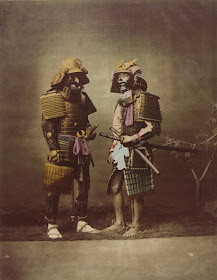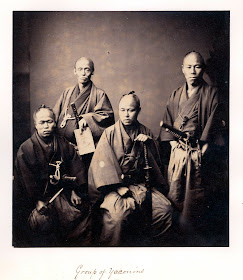Felice Beato:
A pioneer in war photography and the photography of Japan, Felice Beato was the first photographer to devote himself entirely to photographing in Asia and the Near East. He photographed in Japan, India, Athens, Constantinople, the Crimea, and Palestine. He settled in Yokohama and from 1863 to 1877 made hundreds of portraits and scenics in Japan.
Just as important as his documentary work, however, Beato is reputed to have helped train the first generation of Japanese photographers, including Kusakabe Kimbei, as well as the noted German photographer Raimund von Stillfried. Beato remained in Yokohama until 1877 at which time he sold his negatives and studio to Stillfried's firm. Beato is considered the father of photography in Japan.
Baron Raimund von Stillfried:
Austrian nobleman who pursued varied careers as artist, soldier, and diplomat before establishing himself in Yokohama in 1871 as a photographer.
Stillfried prospered as a commercial photographer, catering to a mixed clientele of Western residents and globe‐trotters. In 1876, he formed a partnership with Hermann Andersen, known as the Japan Photographic Association, and the following year purchased the studio and stock of Felice Beato.
In 1878, the Stillfried–Andersen partnership was dissolved, with the latter retaining the company name of Stillfried & Andersen, while the former operated as Baron Stillfried, creating confusion both for contemporaries and for later photo historians. Stillfried left Japan permanently in 1881 and undertook various photographic commissions in Siam (Thailand) and Hong Kong before finally returning to Vienna in 1883.
Kusakabe Kimbei:
One of the most famous 19th and early 20th century Japanese photographers who worked with Felice Beato and Baron Raimund von Stillfried. Developing his own style, he operated his own studio in Yokohama from the early 1880s until 1913. When Stillfried left Japan in 1885 Kusakabe Kimbei acquired his plates and some of those of Beato and continued to print and hand color them. His subjects appear more relaxed with him than they did for Stillfried and Beato and this is probably because he was Japanese.































No comments:
Post a Comment